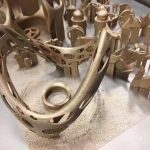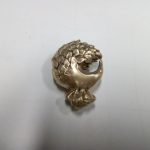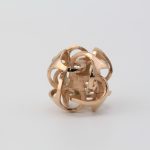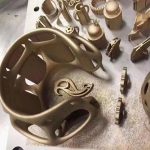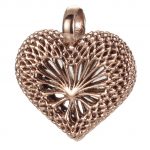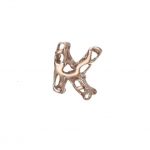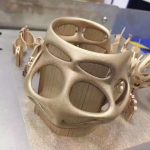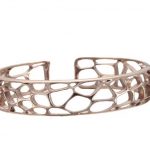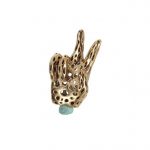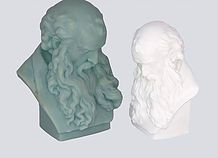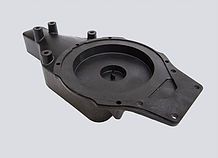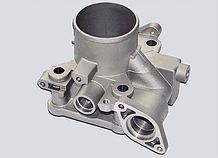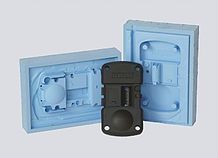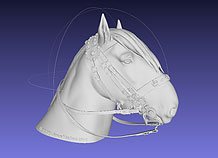Manufacturing Infomation
 Pricing: $30.95/cm3
Pricing: $30.95/cm3
 Minimum Cost:$25
Minimum Cost:$25
 Lead Time: 5 days
Lead Time: 5 days
120 x 120 x 100
5 x 5 x 5
0.02
±0.2% (with a lower limit of ±0.2 mm)
Colours Available
Bronze
Colours Post Process
Additional Info
"The pricing for Bronze is based on:
- Model volume: The volume of your model is used to calculate the material cost (mm³)
- The box around your model: An imaginary box around your model determines how much space your design will take up in the printer (X * Y * Z = mm³)
- Model surface
For Bronze, we charge a minimum price per ordered piece. Unlike the startup cost (which is applied to most materials), this cost vanishes when the price is higher than the minimum price.
Raw bronze is a high-detail metal with a deep red color similar to rose gold. It has a subtle marbling effect, and the silvery highlights give each piece their own unique character.
Polished bronze goes through extensive hand polishing to give it a smooth, glossy finish. It is great for miniatures, precious objects, and shiny, modern jewelry. Raw Bronze has a rustic matte look with rough surfaces. It is great for antique-looking objects, vintage and steampunk jewelry, functional parts, and jewelry prototypes.
Some detail is lost during polishing and plating
Polishing and plating give this material a beautiful finish, but can have an impact on fine details. During the polishing step, fine or sharp-edged details may be polished down or even broken off. During plating, intricate engravings or holes may be filled in partially or completely. Keep this in mind when you're designing fine details.
Internal detail can not be polished
We can only polish well-reachable surfaces, so tight internal spaces may remain unpolished and show slightly uneven plating.
Avoid long unsupported stone holding prongs"
Features
 Watertight
Watertight

 Foodsafe
Foodsafe

 Glue-able
Glue-able

 Recycleable
Recycleable

 Biocompatible
Biocompatible

 Biodegradable
Biodegradable

 Additive Manufacturing
Additive Manufacturing

Design Rules

Min Supported Wall Thickness:0.8mm
A supported wall is one connected to other walls on two or more sides.

Min Unsupported Wall Thickness: 1mm
An unsupported wall is one connected to other walls on less than two sides.

Min Supported Wires:0.8mm
A wire is a feature whose length is greater than five times its width. A supported wire is connected to walls on both sides.

Min Unsupported Wires:1mm
A wire is a feature whose length is greater than five times its width. An unsupported wire is connected to walls on less than two sides.

Min Embossed Detail: 0.6mm
A detail is a feature whose length is less than twice its width.
The minimum detail is determined by the printer's resolution.When detail dimensions are below the minimum, the printer may not be able to accurately replicate them. Details that are too small can also be smoothed over in the polishing process.
To ensure details come out clearly, make them larger than the indicated minimum. We may refrain from printing products with details smaller than the minimum, since the final product will not be true to your design. If your product has details smaller than the minimum, try making them larger, removing them, or considering a material with finer detail.
The minimum detail is determined by the printer's resolution.When detail dimensions are below the minimum, the printer may not be able to accurately replicate them. Details that are too small can also be smoothed over in the polishing process.
To ensure details come out clearly, make them larger than the indicated minimum. We may refrain from printing products with details smaller than the minimum, since the final product will not be true to your design. If your product has details smaller than the minimum, try making them larger, removing them, or considering a material with finer detail.

Min Engraved Detail:0.6mm
A detail is a feature whose length is less than twice its width. Engraved or debossed details go into a surface.

Min Escape Holes:0mm

Min Clearance:0.5mm
Clearance is the space between any two parts, walls or wires.
To ensure a successful product, make the clearance between parts, walls, and wires greater than the indicated minimum. If your clearance is too small, try making the gap bigger, or consider fusing the parts or features if their independence is unnecessary. You can also try a material with a smaller minimum clearance.

Interlocking/moving or enclosed parts?No
Sometimes the interlocking/moving parts can't be printed, since the supports inside the cross section can't be removed.

Require Support Material?Yes
Because each layer needs to build off the last, for some material, angles of more than 45 degrees generally require supports to be printed along with the design. Supports are not inherently detrimental for your design, but they do add complexity to the printing process and lead to less smooth finish on overhanging parts.

